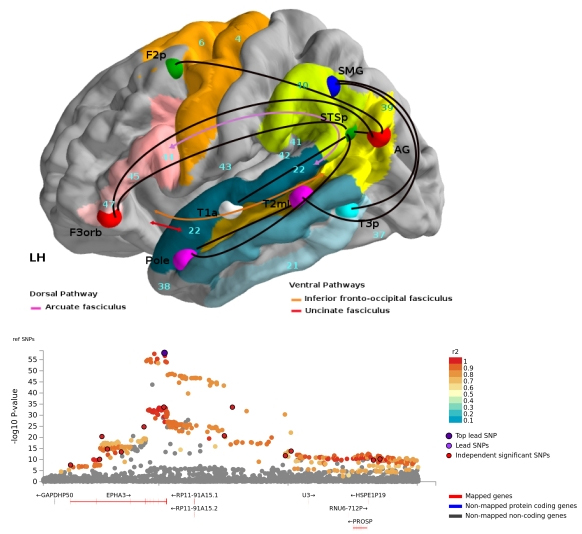Language in Humans has a very complex genetic architecture. In parallel, neuroimaging has significantly contributed to the understanding of structural and functional aspects of language in the human brain and the recent availability of large scale cohorts like UK Biobank enabled to study language via image-derived phenotypes (IDP) like Superior Temporal Asymetrical Pits (STAP) features or langage-related functional connectivity, in
the general population. Brain IDP are most often multivariate with complex genetic architecture consisting of many common variants with small individual effects, which is challenging for GWAS. We successfully performed multivariate genome-wide association study (mvGWAS) techniques on language-related IDP and plan to apply similar approaches to brain IDP related to mood disorders, combined with a dimensional approach (Research Domain Criteria), in UKBiobank, in collaboration with the PsyBrain team (UNIACT). Methods are more and more trying to bridge the gap between univariate and multivariate approaches in imaging-genetics to deal with highly colinear variables. Brain tumors are very often diagnosed and monitored with MRI scans. As it is a severe pathology, signals in imaging and in genomics are very high, which allows to perform multivariate multi-block machine learning approaches. We work on applying these methods in psychiatry, leveraging prior knowledge from gene-gene interaction networks to enhance the interpretability of our multivariate models, as we did to predict survival of patients with glioma (Chegraoui, in review). Finally, as multi-modal MRI and multiple dimensions are now often available on the same subjects (UKBiobank, ABCD, HBN, etc), we plan to study the shared genetic etiology between dimensional phenotypes and multi-modal endophenotypes, with Structural Equation Modeling (SEM), like genomicSEM or GRM-SEM, to uncover complex relationships between psychiatric conditions and brain structures and functions.

Rs35124509 an eQTL of EPHA3 gene on chromosome 3 (bottom) is associated with functional connectivities belonging to the semantic component of language (top). ©2023 Published by Elsevier Inc.